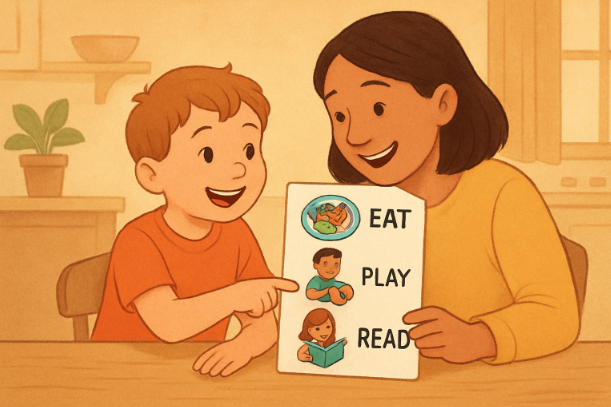Key Takeaways
- Learn how an ABA therapy provider helps individuals manage daily routines and improve communication.
- Discover science-backed strategies for reducing challenging behaviors and promoting skill development.
- Find simple techniques that families, educators, and caregivers can use at home or in the classroom.
- Gain insight into how consistency and reinforcement are key to sustainable progress.
Table of Contents
- What Is ABA Therapy?
- The Science Behind ABA: What Research Says
- How ABA Therapy Improves Everyday Life
- Core Strategies ABA Therapy Providers Use
- Tips For Families And Caregivers
- Overcoming Everyday Challenges With ABA
- Real-Life Success Stories And Examples
- Further Reading & Resources
What Is ABA Therapy?
Applied Behavior Analysis (ABA) therapy is a well-established, evidence-based approach to helping individuals with behavioral and developmental challenges, such as those on the autism spectrum. ABA centers on understanding how behavior works, how it’s affected by the environment, and how learning happens. By breaking down complex behaviors into smaller, more manageable steps, an ABA therapy provider supports clients in building essential life skills while reducing behaviors that may impede learning, inclusion, or independence. For those looking to access quality ABA support, Brighter Strides ABA services in North Carolina offer comprehensive, compassionate care tailored to each individual’s unique needs.
ABA therapy is more than addressing challenges—empowering individuals and their families to reach meaningful milestones. From fostering better communication skills to mastering daily routines, the impact of skilled ABA therapy can transform lives for clients and those around them.
The Science Behind ABA: What Research Says
Backed by decades of research, ABA therapy is one of the most extensively studied treatments for individuals with autism spectrum disorder and related challenges. According to the Centers for Disease Control and Prevention (CDC), ABA can significantly improve communication abilities, academic performance, and independent daily living. ABA is grounded in scientific principles of learning and behavior, and interventions are continually refined based on observable and measurable outcomes. This commitment to individualized, evidence-based care ensures clients’ unique abilities and needs drive their progress.
How ABA Therapy Improves Everyday Life
The benefits of effective ABA therapy are seen daily in routine activities at home, school, and within the community. Individuals may become more independent in dressing, eating, or managing emotions. ABA therapy providers work closely with families to teach skills directly impacting quality of life, whether making friends, coping with unexpected changes, or handling challenges like grocery store visits. As individuals learn positive behavior patterns, their self-confidence and willingness to participate in new activities often grow exponentially.
These changes can mean significantly less stress and a more harmonious home life for families and caregivers. Routine struggles—like transitions between activities or mealtimes—can become manageable, increasing opportunities for joyful interactions. Even in small steps, consistent progress fosters hope and motivation for everyone involved.
Core Strategies ABA Therapy Providers Use
- Positive Reinforcement: Providers identify and reward desired behaviors to strengthen the likelihood of these behaviors recurring. This might include verbal praise, tokens, or favorite activities.
- Task Analysis: Complex tasks are broken down into a sequence of teachable steps, making it easier for the individual to learn and master each piece before moving on to the next.
- Prompting and Fading: Guidance is provided through prompts—such as verbal, gestural, or physical assistance—which are systematically reduced as skills develop, supporting independence over time.
- Data-Driven Decisions: Progress is closely tracked, allowing therapists and families to adjust strategies for optimal results. Data collection ensures effective interventions are tailored to each person’s evolving needs.
To further underscore the effectiveness and adaptability of ABA strategies, the American Psychological Association highlights the importance of structured, individualized approaches in producing meaningful and sustained improvements in community participation.
Tips For Families And Caregivers
Families and caregivers are the cornerstone of successful ABA therapy. Collaboration and practice at home amplify the gains made in session. Here are several practical tips to help families make the most of ABA principles in daily life:
- Visual Schedules and Timers: Structuring routines visually helps make expectations clear and transitions less stressful for children and adults alike.
- Clear, Concise Communication: Breaking instructions into simple, manageable steps improves understanding and reduces frustration.
- Celebrate All Achievements: No victory is too small. Recognize and reinforce both minor and significant progress to keep motivation high.
- Regular Feedback: Maintain open communication with your ABA provider. Review goals regularly, share observations, and discuss strategies to stay on track.
Overcoming Everyday Challenges With ABA
Challenging behaviors—such as meltdowns, noncompliance, or transition difficulties—can be daunting for families and educators. ABA therapy equips clients and their support networks with proactive strategies. Teaching alternative communication methods, such as using gestures or communication devices for those with limited speech, is one way to reduce the frequency and intensity of challenging outbursts.
Consistency is crucial for success. For example, helping a child transition smoothly from a favored activity to a less preferred one might involve a countdown or a “first-then” statement (“First we clean up, then you can play outside”). Over time, these strategies help the individual anticipate changes and cope more flexibly, reducing overall stress for everyone involved.
Real-Life Success Stories And Examples
The positive effects of ABA therapy are best observed in the success stories shared by families and caregivers. A young student who once struggled with group activities may learn to greet classmates and initiate friendships through consistent, reinforced practice. Another child might acquire self-help skills, such as dressing or feeding themselves, fostering a new sense of independence and pride.
With continued support and ongoing collaboration, families often notice dramatic shifts in both abilities and attitudes. Confidence grows, and individuals are more willing to try new experiences, enriching their relationships and broadening their possibilities.
Conclusion
Implementing effective behavioral strategies can create meaningful improvements in daily life for individuals and families alike. Breaking goals into manageable steps, reinforcing positive behaviors, and applying consistency help reduce challenges while building essential life skills. Parents, caregivers, and educators gain tools that promote independence, confidence, and smoother routines for children and adults. Beyond addressing immediate concerns, these strategies foster long-term growth and resilience, encouraging greater participation in school, work, and community activities. With patience, collaboration, and the proper support, families can experience significant progress, opening the door to more fulfilling and balanced lives together.



